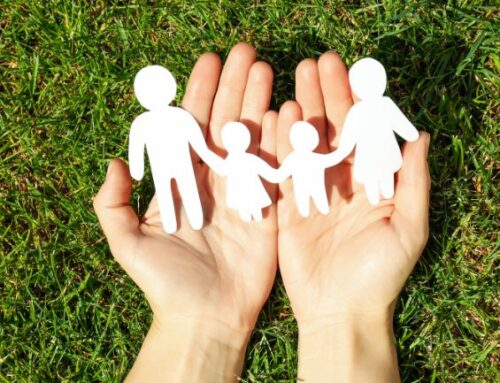Rick McGinnis:

Interim writer, Rick McGinnis, Amusements
There was a point, nearly a quarter century ago, when the war to protect children online was probably lost. Writing about the Children’s Online Privacy Protection Act (COPPA) in his new book The Anxious Generation: How the Great Rewiring of Childhood is Causing an Epidemic of Mental Illness, Jonathan Haidt notes that the original draft of the bill defined a child as anyone under age 16 for the purposes of data collection and user contracts with companies in the burgeoning tech sector. But the age restriction was pushed back to 13 after a campaign by e-commerce companies working with civil liberties groups “who were concerned that the new bill would make it harder for teens to find information about birth control, abortion or other sensitive topics.” This change, Haidt writes, “had nothing to do with adolescent brain development or maturity; it was just a political compromise.” But it established 13 as the age when you became an adult on the internet, and subject to the whims and attentions of companies who viewed your time, opinions, tastes and consumer choices as a commodity to be exploited with almost no human oversight.
“It was too young and I knew it was too young then,” says U.S. senator Ed Markey, a member of the House of Representatives, who authored the bill. “It was the best I could do.”
And even this is a restriction that tech companies consider unreasonable. Facebook CEO Mark Zuckerberg said in 2011 that COPPA’s regulations are “a fight we take on at some point. My philosophy is that for education you need to start at a really, really young age.”
What was not known then but is commonplace now is that online entities, made ubiquitous and endlessly accessible thanks to smartphones, are wreaking havoc on the mental health of children. (Haidt’s book focuses primarily on people under 19; a similar look at the effects the ubiquitous internet has had on adults and society as a whole would be another book, probably several, many times longer.)
Haidt, a social psychologist at New York University, spends the first half of his book detailing the sudden statistical decline in mental health among children and youth, breaking it down (probably unfashionably) into the impacts on boys and girls. Like most catastrophes, it began slowly then grew quickly, with the most severe changes becoming apparent after the widespread introduction of smartphones nearly 15 years ago.
The biggest victim so far has been Generation Z, the cohort born just before the turn of the century and the one that grew up without knowing a world without a massive online component. This was combined with an anxious style of parenting which favoured supervised activities over unsupervised ones; it put a whole new world of private, online diversions in the hands of children who were considered too fragile for the (largely perceived) dangers of the real world and outside play. “This is the world in which Gen Z was raised,” writes Haidt. ‘It was a world in which adults, schools, and other institutions worked together to teach children that the world is dangerous, and to prevent them from experiencing the risks, conflicts, and thrills that their experience-expectant brains needed in order to overcome anxiety and set their default mental state to ‘discover’ mode.”
For girls the most harm is done by social media apps; for boys its gaming and online porn. Both are targeted by technology that is tailored to perceptional behaviour that’s essentially hardwired into the sexes. (Once again, Haidt knows he’s on dangerous ground with this analysis.) The results differ accordingly.
For girls, it’s a sharp rise in depression and anxiety due to feeling watched, judged, and found wanting by a jury of their peers that has expanded exponentially, from those whom they know at school to anyone who follows them online. For boys it’s an escape from adolescent social expectations and an environment that discourages physical risk, into a place where sexual curiosity and gratification and the sense of challenge and danger are satisfied alone, at home, in their room or wherever they can get time with a screen.
It has produced social phenomena like a sudden and improbable surge in children manifesting symptoms of Tourette’s Syndrome, a condition that had historically been seen largely in males, but now showing a wild rise in females. It was traced back to a small handful of YouTube videos and TikTok posts, and subsided when the Tourette’s “moment” online passed.
It goes without saying that COVID lockdowns increased the speed and volume at which these changes could be seen and heard. So much of what is happening to kids right now is still playing out, though the graphs that Haidt uses to chart these changes almost all end in the current moment in the middle of steep increases in screen time, in psychiatric disorders, in self-harm, and in expressions of despair and hopelessness.
But what can be done about this? That takes up much of the second half of Haidt’s book, starting with what government and the tech industry can do. This is where I’ll admit to having the least hope: government generally only does what players with the most money and influence want, and right now the tech industry has no intention of changing the status quo they did so much to create.
Haidt writes about having a video call with Mark Zuckerberg in 2019 and telling him that there was no way to stop anyone age 13 or younger from opening an account on social media like Facebook. Zuckerberg replied that “we’re working on that,” but four years later, while writing his book, Haidt noted that nothing had changed. In light of Zuckerberg’s statements about COPPA, it’s unlikely anything will without the harshest persuasion.
Real change, Haidt insists, would have to include four conditions: “1. No smartphones before high school. 2. No social media before age 16. 3. Phone-free schools. 4. Far more unsupervised play and childhood independence.” I have already expressed my lack of faith in government and the tech industries, but Haidt says that schools and parents can play a role just as crucial.
Schools are, as far as I can tell, not significantly different from government or business, especially at a time when public service unions effectively run public school systems. Real change will only come from private schools, charter schools, and homeschooling, but only if their collective power outweighs public school systems.
In the end it’s up to parents, who will have to break with longstanding trends and the entropy of the conventional wisdom of modern parenting to insist on change— one family at a time. As debased as society has become, we still live in communities (though what passes for such a thing today would barely register on previous generations). A groundswell of change in a community can have outsized effects despite comparatively small numbers; this is both the strength and weakness of human society.
“The most important lesson here is to speak up,” Haidt writes. “If you think the phone-based childhood is bad for children and you want to see a return to play-based childhood, say so. Most people share your suspicion, but they are not sure what to do about it. Speak to your friends, your neighbors, your coworkers, your social media followers, and your political representatives.”
In framing his book, Haidt describes what has happened to children living in an online world over the last generation as a kind of experiment that, if described as a science fiction scenario, would be deemed dystopic. And as an experiment, I am not sure it has truly played out yet; the future of the generation most affected remains unwritten. I know the effect it has had on adult society has been a political, social, and cultural horror show. As ever, the most important thing is what happens next.




